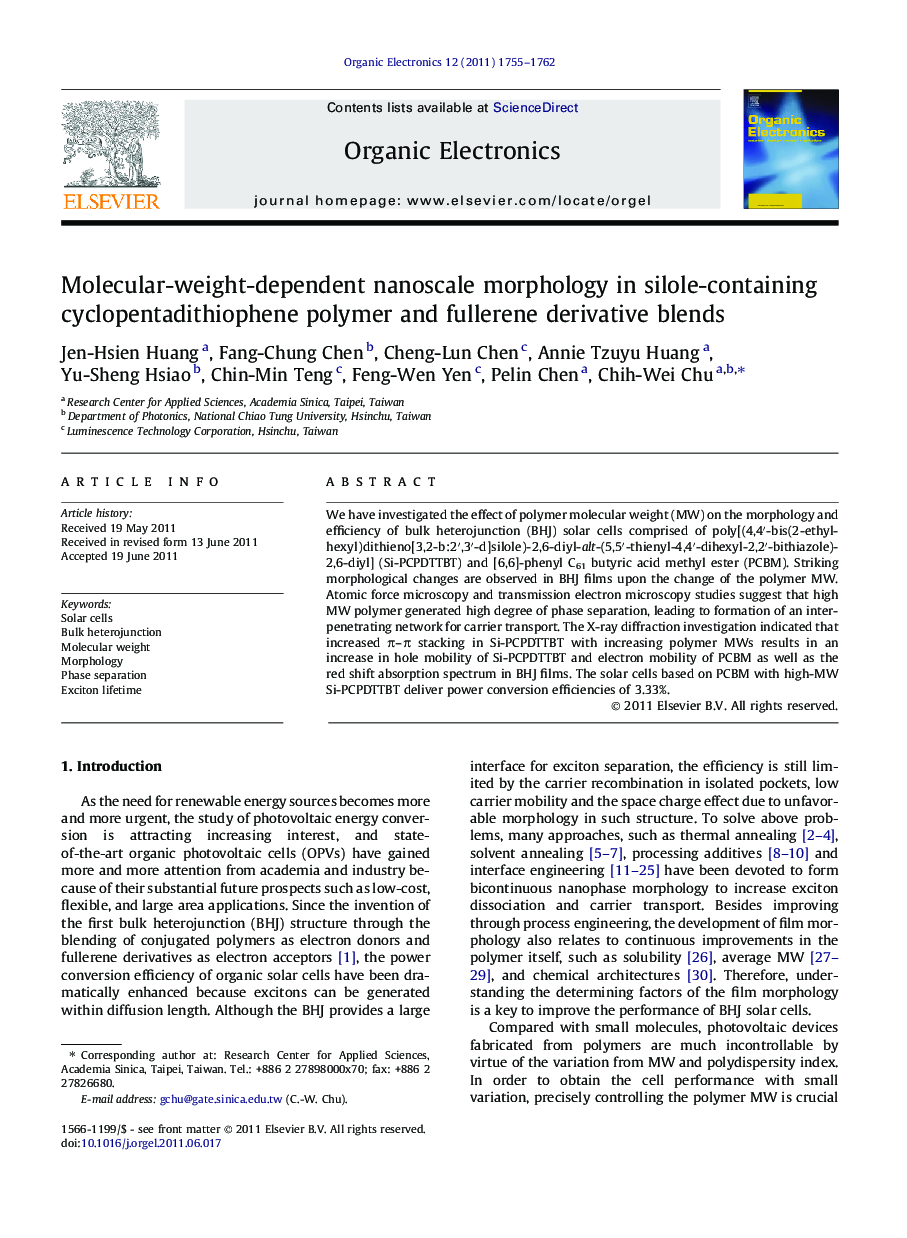| کد مقاله | کد نشریه | سال انتشار | مقاله انگلیسی | نسخه تمام متن |
|---|---|---|---|---|
| 1264718 | 972169 | 2011 | 8 صفحه PDF | دانلود رایگان |

We have investigated the effect of polymer molecular weight (MW) on the morphology and efficiency of bulk heterojunction (BHJ) solar cells comprised of poly[(4,4′-bis(2-ethylhexyl)dithieno[3,2-b:2′,3′-d]silole)-2,6-diyl-alt-(5,5′-thienyl-4,4′-dihexyl-2,2′-bithiazole)-2,6-diyl] (Si-PCPDTTBT) and [6,6]-phenyl C61 butyric acid methyl ester (PCBM). Striking morphological changes are observed in BHJ films upon the change of the polymer MW. Atomic force microscopy and transmission electron microscopy studies suggest that high MW polymer generated high degree of phase separation, leading to formation of an interpenetrating network for carrier transport. The X-ray diffraction investigation indicated that increased π–π stacking in Si-PCPDTTBT with increasing polymer MWs results in an increase in hole mobility of Si-PCPDTTBT and electron mobility of PCBM as well as the red shift absorption spectrum in BHJ films. The solar cells based on PCBM with high-MW Si-PCPDTTBT deliver power conversion efficiencies of 3.33%.
Figure optionsDownload as PowerPoint slideHighlights
► We synthesized polymers with different molecular weight (MW) to fabricate solar cell.
► Higher MW polymer tends to form stacked aggregation leading to high crystallinity.
► This produces better interconnections for both polymer and PCBM.
► Therefore, the charge transport within the polymer film can be enhanced.
Journal: Organic Electronics - Volume 12, Issue 11, November 2011, Pages 1755–1762